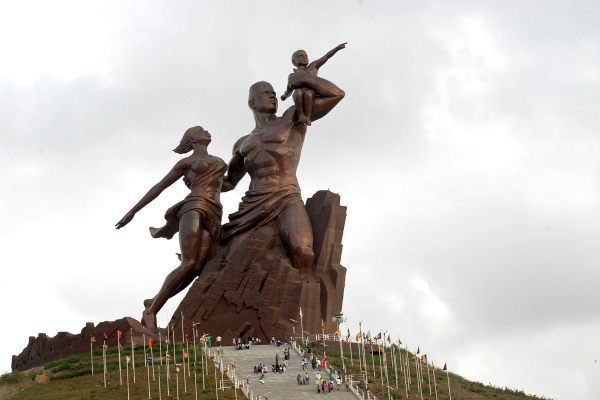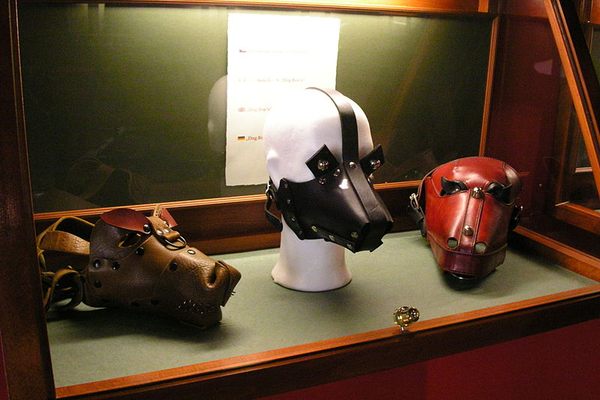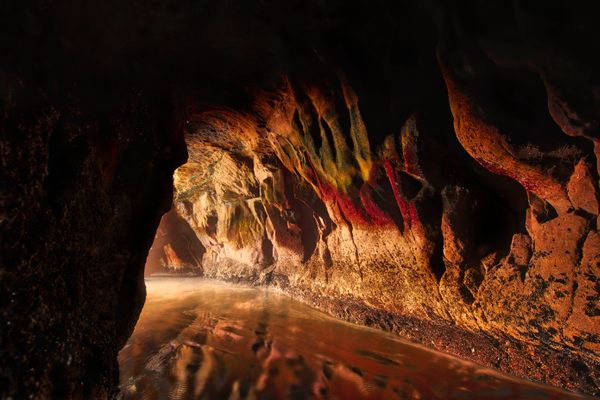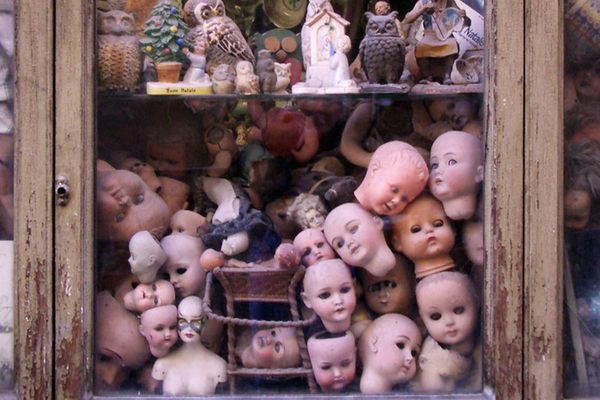What’s Across the Street: The Secret Sights Alongside Famed Destinations
Pizza Hut view of the Pyramids of Giza (photograph by elainne_dickinson/Flickr user)
What’s Across the Street?
Guidebooks are full of “destinations” — the majestic monument or unique site that embodies a particular location. But a place isn’t only about its famous museum or historic statue. What’s right across the street from the well-photographed tourist destination can tell a wildly different story about where you are. Juxtaposed with the well-polished, well-monied tourist spot is a deeper, unexpected history.
This guide takes a look away from the well-known tourist destinations and shows us what is hiding beyond the picture frame.
Pizza Hut Across the Street from the Sphinx and Pyramids of Giza
Giza, Egypt
Pizza Hut view (photograph by Atsuto/Flickr user)
How ancient are the Sphinx and great Pyramids of Giza? Enough that they were already 2,000 years old when Greek historian Herodotus visited the site in 450 BCE. The most famous of Egypt’s many ancient historical sites, the Sphinx and three main pyramids of the Giza necropolis have been icons of Egypt’s ancient historical heritage significance for thousands of years, and have attracted an untold number of tourists.
Common images of the Sphinx and pyramids of Giza show them standing lonely in the desert — removed from time and the frantic pace of today’s modern life. But if the camera faces the other way, it tells a very different story.
Expanding urban development from Cairo has absorbed the city of Giza and brought a metropolis to the edge of the Sphinx’s paws. Enjoying modern American-style pizza and soda from Pizza Hut while overlooking the last remaining great wonder of the ancient world may seem like an overwhelming contrast, but is simply a fact of life for the city’s residents.
Sphinx looking at Pizza Hut (photograph by Rob Flickenger/Flickr user)
Across the Street from the White House: Concepcion Picciotto
Washington, DC
The White House Peace Vigil (photograph by Eneas De Troya/Flickr user)
The White House: home of the President of the United States and his family since 1801. Visitors schedule tours up to six months in advance for the chance to get an inside look of the mansion and experience the power of the Executive Office.
Across the street from the white columns, manicured grounds and sharp-eyed security guards is an old woman. She’s holding a cardboard sign and a handful of leaflets. Her name is Concepcion Picciotto, and she has been there since 1981, carrying out the longest continuous act of political protest in the United States.
Concepcion, also known as Connie, emigrated from Spain to the United States in 1960. After a bitter divorce and custody battle, she moved to Washington DC, where she met her future partner in protest, activist William Thomas. Fueled by an intense desire for justice and peace, they both joined to protest nuclear proliferation and government deception.
They stood together for over 20 years, holding their signs, talking to anyone who would listen about the need for world peace and nuclear disarmament. The pair became a permanent fixture, despite years of sleeping in parks, living on donations, and enduring police interference. When Thomas passed away from heart failure in 2009, Picciotto was back at their protest encampment the next day, laden with memorial signs, continuing the call for worldwide peace.
Concepcion Picciotto with signs (Photograph by kansasphoto/Flickr user)
Currently, when she is not at her solemn protest, she lives in the Occupy Peace House, a non-profit haven for a political activists, owned by Thomas’s wife Ellen. Other residents of Peace House have joined Picciotto at her protest to give her time to rest, since her age and health problems are beginning to make it difficult for her to continue long shifts.
Thousands of people walk past the White House every day, and many congratulate Picciotto on her message and endurance. In a 2013 Washington Post article, she replied to them: “People always tell me, ‘We need more people like you. […] I tell them: ‘But it starts with you. You are responsible for what’s going on.’ If people were more concerned, I wouldn’t have to be there.”
Picciotto’s protest camp in front of Lafayette Park (photograph by NCnDC/Flickr user)
Slums Surrounding Maracanã Stadium & Olympic Facilities
Rio de Janeiro, Brazil
Inside the Rio de Janeiro stadium (photograph by nicholasbittencourt/Flickr user)
Originally built for the 1950 World Cup, the Maracanã soccer stadium was the biggest stadium of its time, and over the decades became a beloved symbol of Brazil. Soccer legend Pelé scored his 1,000th goal here, Frank Sinatra performed a wildly popular concert there in 1980, and the stadium was declared a national landmark in 1998.
Maracanã underwent major renovations after being selected to host the 2014 FIFA World Cup and 2016 Summer Olympics. A fiberglass roof was built to shelter 95% of the stadium seats, and seating and team facilities were upgraded with modern comforts.
With the renovations, however, came some unwelcome changes. The geral, a standing-room area with cheap tickets, was eliminated. The capacity of the stadium went from over 100,000 people to around 80,000 people. This was seen as an affront to the egalitarian nature of the game, cutting out the poorer classes who could no longer afford the suddenly rarer and more expensive stadium tickets. To compound the issue, ownership of Maracanã passed from the Brazilian government to a private owners in June of 2013, sparking protests and debate about future of the community and spirit of the stadium under corporatized ownership.
Favela near Maracanã stadium (photograph by Marco Verch/Flickr user)
The renovation and privatization controversy of Maracanã underscored a deeper societal issue. In the shadow of the gleaming white walls of the stadium is one of Rio de Janeiro’s favelas, or slums, named Mangueira. Dwellings in favelas are often illegally built and occupied by low-income populations with limited access to sanitation and electricity. Mangueira and other Rio de Janeiro favelas underwent incidences of forced evictions and “pacificiations” by Brazilian police leading up to the 2014 FIFA World Cup, reviving memories of similar forced evacuations in the 1970s. Government intervention and attempted gentrification of Mangueira and other favelas ignited public anger over Brazil’s class divisions, and turned an international eye to the deep institutional inequality in Brazilian society.
Maracanã, once a common ground for the Brazilian people to join together and experience the jogo bonito, may now leave an uncertain legacy. What does it mean to have a beautiful, modern stadium, a temple to the most popular sport in the world, if the people living down the street could never afford to watch a game there?
Maracanã stadium with a favela in background (photograph by IK’s World Trip/Flickr user)
Slums Surrounding the African Renaissance Monument
Dakar, Senegal
Aerial view of the African Renaissance Monument (photograph by Jeff Attaway/Flickr user)
The tallest statue in Africa depicts a man, with his arm around the waist of a gauze-draped woman, holding in his other arm a child pointing west. The bronze African Renaissance Monument is 160 feet tall, taller than the Statue of Liberty, and dominates the skyline of Senegal’s capital, Dakar, from atop a 300-foot-tall hill.
The statue was the controversial brainchild of Senegal’s then-president Abdoulaye Wade, whose presidency was marred by widespread accusations of corruption. In a written defense of his project, Wade stated “[t]his African who emerges from the volcano, facing the West […] symbolizes that Africa which freed itself from several centuries of imprisonment in the abyssal depths of ignorance, intolerance and racism, to retrieve its place on this land, which belongs to all races, in light, air and freedom.” The statue’s unveiling ceremony was attended by a delegation of 19 African heads of state and other dignitaries, including Reverend Jesse Jackson and Senegalese-American singer Akon.
Contrasting this grand spectacle, the behemoth monument overlooking the coastline of Dakar also overlooks its surrounding slums, where impoverished inhabitants, lacking other materials, build homes out of garbage. Half of the country’s population lives under the poverty line.
The project was widely criticized for its $28 million dollar cost, and despite its ostensible mission to celebrate African heritage, was designed by a Romanian architect, built by a North Korean construction firm, and resembles chiseled Soviet-inspired aesthetics more than actual African features. To add insult to injury, Wade claims intellectual property rights for the monument, and takes 35% of all tourist revenue generated from the statue. In a country where a multi-million dollar art project can take precedence over the population living in garbage dumps, it seems like the statue is celebrating the opposite of a renaissance — the same old story.
African Renaissance Monument (photograph by Jeff Attaway/Flickr user)
The museums of Sex, Communism, & Torture down the street from the Prague Astronomical Clock
Prague, Czech Republic
Prague Astronomical Clock (photograph by Godot13/Wikimedia)
The Prague Astronomical Clock was first installed in 1410, and is the oldest working astronomical clock in the world. It not only displays Babylonian, Old Bohemian, German, and Sidereal time, but the phases of the moon and zodiac signs as well. As time passes, intricate clockwork figurines and revolving statues of the twelve apostles appear and disappear, while crowds of thousands gather in the courtyard below to watch an articulated skeleton strike the hour.
What these crowds of clock-watchers might not know is that just down the street from this famous marvel of engineering, there are a few museums with subjects beyond the usual artworks and artifacts.
A seven minute walk from the Prague Astronomical Clock brings you to the Museum of Medieval Torture Instruments. Visitors wander three floors filled with the spine-tingliest examples of the horrifically imaginative ways people have devised to extract information from other people. There are iron maidens, racks, break-knees, and hundreds of other grisly tools to haunt your imagination.
Interested in more recent history? Then take short stroll to the Museum of Communism. The only museum in Prague dedicated to exploring the Communist regime in the now-Czech Republic and Slovakia, this exhibits focus on the effects of Communist rule in Prague in particular.
Museum of Communism poster (photograph by Alessandro Giangiulio/Flickr user)
Visitors can expect an immersive experience as the museum guides them through themed exhibits, including a replicated factory, schoolroom, and interrogation chamber. Displays of Communist art, stories of corruption and the secret police, and video footage of the protests leading up to the Velvet Revolution effectively recreate an atmosphere of fear and oppression, which contrasts to the bustling, energetic modern Prague.
Prague is not simply its medieval clocks and cobblestone streets: the relatively recent Communist rule is still alive in the memory of its citizens.
Soviet classroom exhibit in Museum of Communism (photograph by Salim Shadid/Flickr user)
A single minute’s walk from the clock will take you to the Sex Machines Museum. Since opening in 2002, the museum’s three floors have been dedicated to, according to the museum’s website, “mechanical erotic appliances, the purpose of which is to bring pleasure and allow extraordinary and unusual positions during intercourse.” How is that for a mission statement?
Over 200 of these erotic appliances are on display, everything from ancient chastity belts and Greek prostitutes’ sandals, to leather BDSM masks, vibrators, and something called a “copulation table.” Visitors may also enjoy what is believed to be the oldest pornographic film featuring a threesome, shot around 1925 in Spain — some say at the bequest of King Alphonse XIII. Not a bad way to end a long day of touring.
photograph by Barbara/Flickr user
Tropical Greenhouse Dome Next Door to the Daigo Fukuryu Maru Exhibition Hall
Yumenoshima Park, Tokyo, Japan
Yumenoshima Tropical Greenhouse Dome (photograph by t.ohashi/Flickr user)
Yumenoshima — “Dream Island” — is a manmade island that began as a landfill for Tokyo’s residents. In 1972, local citizens built a park over the former dumping ground, constructing several recreational facilities including a massive arcade, sports arena, and a baseball ground.
photograph by Takayuki Miki/Flickr user
One of the major attractions of this rare green space in a largely industrial area is the Tropical Greenhouse Dome, a three-chamber botanical garden. One dome features a fern forest with a waterfall, the second contains a display of tropical and carnivorous plants, and in the third dome are rare subtropical plants from Japan’s Ogaswara Islands. The facility is heated entirely from an adjacent garbage incineration plant.
photograph by Guilhem Vellut/Flickr user
Just a few steps away from this dense display of life’s diversity is a much more somber reminder of the dangers of unchecked. The Daigo Fukuryu Maru (“Lucky Dragon”) was a fishing boat caught in the nuclear fallout of the United States’ experimental atomic bomb detonation on the Bikini Atoll on March 1, 1954.
Hull of the Lucky Dragon (photograph by Guilhem Vellut/Flickr user)
The US Government misjudged the size of the explosion and the day’s wind patterns, and had not warned local ships or island residents about the dangers of radioactive fallout. The 23 crew members spent over three hours working in a soft rain of white ash, then began to suffer pain, nausea, and inflamed skin. After pulling into port and seeking medical attention almost two weeks later, one of the crew members died, and the others were hospitalized with radiation sickness.
News of the Lucky Dragon’s fate caused a widespread outcry against nuclear weapons testing and a panic over possible radioactive contamination of fish populations. The United States government eventually paid around $2 million dollars in compensation to the Japanese government, with each of the Lucky Dragon’s crew receiving about $5,000 for medical expenses.
After a period of quarantine, the Lucky Dragon returned to service, and was abandoned in 1967. During the construction of Yumenoshima, the ship was found, restored, and installed as a museum in the park to memorialize those impacted by the horrors of nuclear weapons. Nearby is a simple grave marker honoring the burial of 450 pounds of radioactive tuna, caught by the Lucky Dragon’s crew that day, which was destroyed to protect it from accidental human consumption.
This quiet, green park by Tokyo Bay is itself a symbol of rebuilding life after destruction, honoring at once death and sacrifice, life and renewal.
View of Yumenoshima from Tokyo Bay (Photograph by Masayuki Igawa/Flickr user)















Follow us on Twitter to get the latest on the world's hidden wonders.
Like us on Facebook to get the latest on the world's hidden wonders.
Follow us on Twitter Like us on Facebook